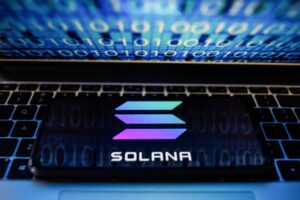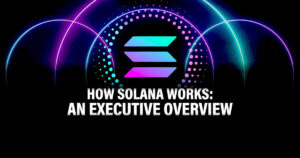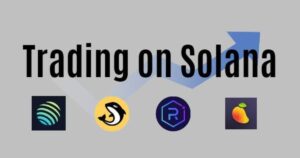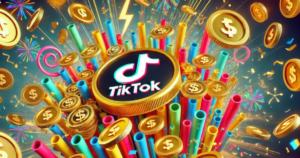Solana (SOL) is an advanced blockchain platform known for its fast transaction processing, low costs, and exceptional scalability. It is the ideal foundation for decentralized applications (DApps) and decentralized finance (DeFi) ecosystems, addressing the limitations of traditional blockchains. Let’s explore how Solana operates to better understand the technological power it brings.
1. What is Solana (SOL)?
Solana is a groundbreaking blockchain with outstanding scalability, designed to deliver fast transaction processing, low costs, and robust support for the development of decentralized applications (DApps). It also serves as an ideal platform for a comprehensive decentralized finance (DeFi) ecosystem, creating a flexible connection between applications.

The standout feature of Solana is its status as the world’s first web-scale blockchain, a concept focused on providing a platform capable of handling thousands of transactions per second while maintaining consistency and decentralization. Thanks to its unique protocol, developing decentralized applications on this platform is easier and more efficient than ever before.
2. Why is Solana popular?
With transaction processing speeds of up to tens of thousands of transactions per second (TPS) and negligible transaction fees, Solana has become the top choice for developers and DeFi projects. Additionally, the Solana ecosystem is rapidly expanding, with numerous prominent projects emerging, from decentralized exchanges (DEX), wallets, to NFT platforms.
3. The history of Solana (SOL)
Solana (SOL) was created based on the vision and experience of Anatoly Yakovenko, one of the co-founders of the project. Before embarking on the development of Solana, Yakovenko had spent many years working in distributed systems design at top technology companies such as Qualcomm Incorporated (QCOM). This experience helped him identify a core issue in blockchain networks: the need for a reliable “clock” to synchronize the entire system.
Yakovenko discovered that if a blockchain could use an accurate and dependable time synchronization mechanism, the network’s transaction processing speed would increase significantly. He believed that integrating Proof of History (PoH) into the blockchain could vastly improve performance beyond traditional systems. This was especially beneficial when compared to popular blockchains like Bitcoin or Ethereum, which can only handle about 15 transactions per second (TPS). This number still falls short when compared to centralized payment systems like Visa, which can process up to 65,000 TPS under ideal conditions.

Thanks to Proof of History, each node in the Solana network can use recorded timestamps to ensure that data is synchronized accurately without relying on complex validation steps. This not only alleviates the burden on the network but also unlocks the potential for Solana to support decentralized applications (DApps) and handle large-scale transactions effectively.
The Proof of History mechanism proposed by Yakovenko enabled Solana to overcome barriers related to speed and scalability, making it one of the fastest blockchains today. This is also the reason Solana stands out among the many new-generation blockchain projects.
4. Technology of Solana
Solana’s technology stands out for its design, which eliminates performance bottlenecks, enabling exceptional transaction speeds with scalability reaching up to 710,000 TPS on a standard gigabit network and 28.4 million TPS on a 40-gigabit network. Solana combines the consensus mechanisms of Proof of Stake (PoS) and Proof of History (PoH), where PoS verifies transactions based on the amount of tokens held, and PoH timestamps, significantly accelerating transaction processing.
The modern architecture, featuring components like Sealevel (supporting multi-threaded smart contracts) and Cloudbreak (efficient storage), has made Solana a fast, secure blockchain, ideal for decentralized applications (DApps) and decentralized finance (DeFi).
5. How Solana works
Solana operates on a combination of advanced technologies and breakthrough mechanisms, achieving fast transaction speeds, exceptional scalability, and high security. These elements lay the foundation for a sustainable and reliable blockchain. The key technologies include:

5.1. Proof of history (PoH)
Proof of History is the core technology that synchronizes time across the entire network. Instead of relying solely on traditional consensus mechanisms, PoH creates a verifiable timeline, which helps:
- Accurately record the timestamp of each transaction.
- Increase data consistency and verifiability.
- Improve transaction processing speeds by reducing the dependency on full synchronization between nodes.
5.2. Proof of tsake (PoS)
Solana uses PoS to determine the right to participate in block creation and validation. Users can stake SOL (Solana’s cryptocurrency) to:
- Earn staking rewards based on the amount of SOL held.
- Contribute to securing and maintaining the network’s decentralization.
5.3. Tower BFT (Turbocharged PoH và Byzantine Fault Tolerance)
Tower BFT is a combination of PoH and Byzantine Fault Tolerance (BFT) mechanisms, ensuring:
- Prevention of attacks from unreliable nodes.
- Faster transaction confirmations while maintaining system sustainability and efficiency.
5.4. Arbitrary message forwarding (AMF)
AMF allows nodes within the network to forward messages quickly and naturally, resulting in:
- Efficient communication between nodes without congestion.
- Enhanced data consistency across nodes, reducing conflicts in recording information.
5.5. Transaction processing và blocktree
Solana utilizes a unique data structure called Blocktree, which enables efficient storage and transaction processing:
- Blocktree can handle thousands of transactions per second without slowing down the network.
- Ensures that transaction data is recorded consistently and transparently.
With its combination of groundbreaking technologies, Solana has become a sustainable blockchain, providing an optimal platform for DApps and the DeFi ecosystem. Its superior processing capabilities and low costs create a promising technological ecosystem, not just as a present solution but as a leap toward the future of decentralized finance.















